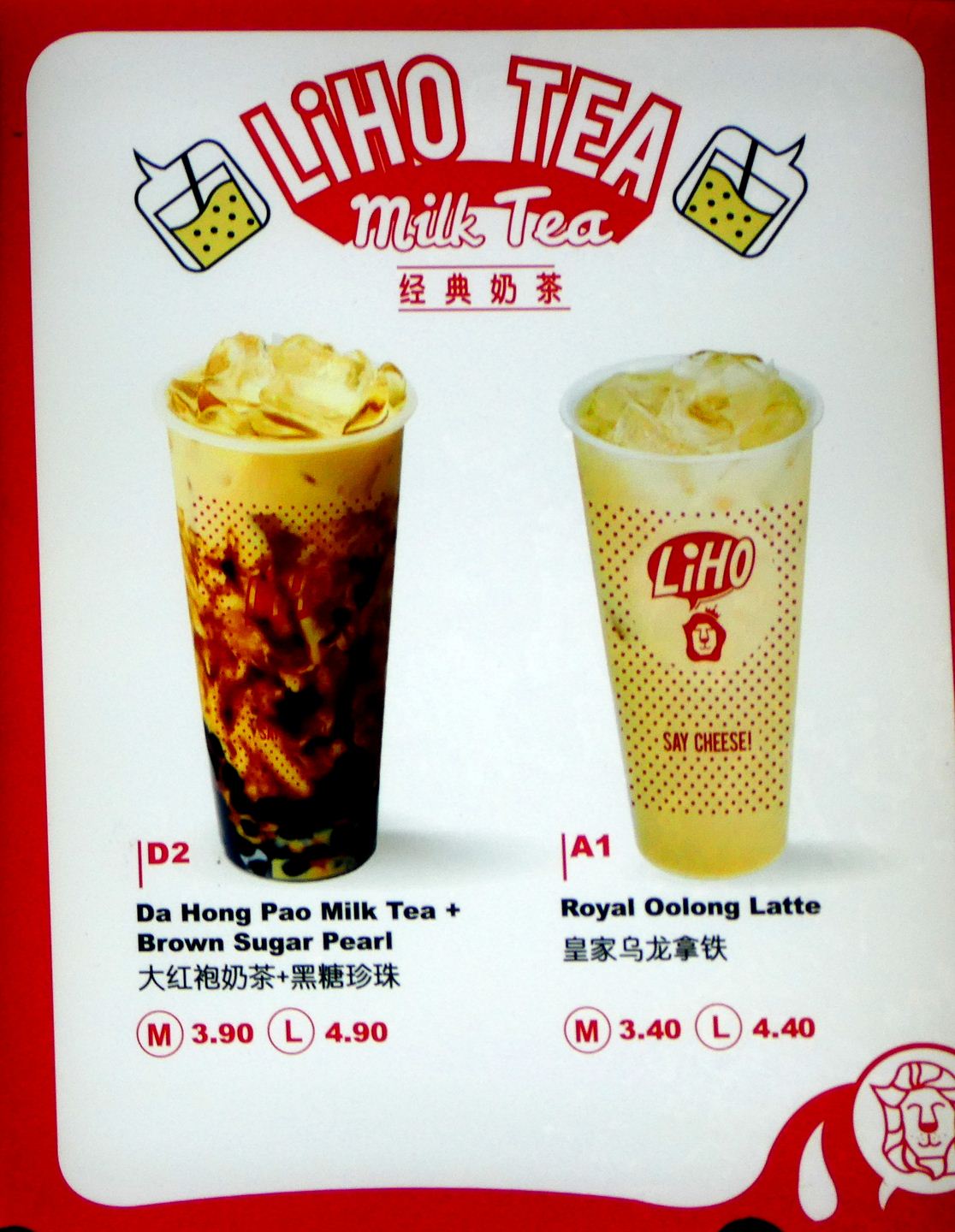$4.50 regular / $5.50 large (SGD)
All throughout my holiday in Singapore, LiHo Tea was seducing me.

It constantly managed to pop up in the places I visited, their brightly lit lion mascot flashing its Mona Lisa smile at me as I passed. Every time I came across one, I was always too full for a bubble tea. The times when I actually wanted one, either the shop was closed, the lineup was insane, or we were in a hurry to get somewhere.
As we neared the end of our time in Singapore, I had resigned myself to no LiHo. Mark tried to console me with the knowledge that there was one location in Kuala Lumpur, but… it’s not the same, man.
As evening fell on Sentosa Island on our last night, I returned from a public washroom to a bright-eyed and lively Mark telling me to close my eyes. I let myself be led blind through Resorts World Sentosa. We only walked about fifteen paces before he told me to open my eyes.

A red glow flooded my vision, but there it was: a LiHo Tea! Somehow this location had flown under our radar, and in the five minutes that I was in the toilets, Mark had looked up LiHo locations in a final desperate bid and saw that there was one right where we were standing.
I greedily rushed inside and did a cursory scan of the menu for appearance’s sake but I already knew what I wanted. I had been eyeing their Brown Sugar Pearl Fresh Milk + Taro Q for days now. Taro Q is LiHo’s name for boba pearls made from taro, the sweet, tropical yam-like root vegetable commonly found in Southeast Asia. I used to drink taro flavoured bubble tea all the time growing up, which in Canada is a lavender purple liquid as sweet as melted ice cream. The flavour is seemingly too wacky for Asia, but I was curious at the concept of taro again after all these years, even if just in bubble form.


The service was very efficient and transactional, handled by a girl who whizzed about and enunciated loudly and clearly. When my drink was ready, it very obviously did not look like the picture. The lovely lilac bubbles that hovered so gracefully in the advert were a mishmash on the bottom with the tea. I mean, of course they were… I don’t think it’s physically possible for tapioca pearls (especially ones made of denser taro) to float on a pillowy milk cloud like that.

I took my cup. As I turned away, the LiHo lion glowed on the wall, lording over me. Its smile looked less smug now, but more suggestive of a “go on my child” sentiment. Finally, after days of missed connections and off-timings, LiHo was mine.
Did angels sing? Was it everything I dreamed of? Was it the most exciting thing to happen to my mouth ever since my braces came off?
No. But it was still pretty enjoyable.

A hint of the taro flavour from the bubbles seeps into the milk, so there’s that little extra sugar element when drinking. The bubbles have the distinct sweet yam flavour but it’s subtle and not too overwhelming. The pearls do inherit the somewhat waxy texture of taro and it can be off-putting to some. Personally, yammy = yummy. It could’ve done with less ice as by the end I was digging around a deep layer of ice chips to get that last bubble, but I found out later that you can customise the ice level. With the boba taking on the added taro sweetness, this might be too sweet for those who find the original brown sugar pearl milk to already be an indulgent treat.
I’m glad I got the chance to try LiHo Tea. You don’t see many boba chains with colourful and unconventional concoctions like you see at LiHo. Strawberry foam… avocado… whatever Da Hong Pao is… it’s really quite different! I look forward to getting that again in Malaysia… I already have a small list of drinks that I want to taste!
Until we meet again, lion man.









